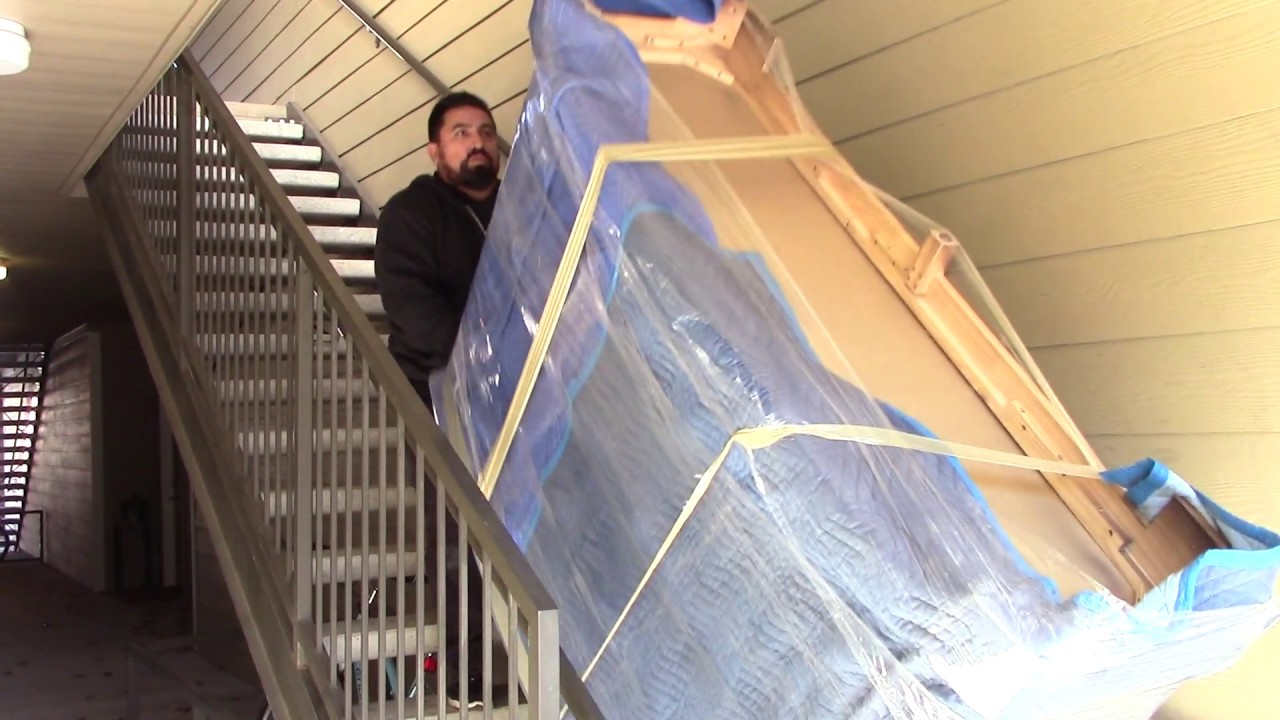Home>Gardening & Outdoor>Outdoor Structures>How To Move A Heavy Pergola


Outdoor Structures
How To Move A Heavy Pergola
Published: January 19, 2024
Learn the best techniques for moving a heavy pergola without causing damage. Our expert tips will make the process easier and safer. Perfect for outdoor structures like pergolas.
(Many of the links in this article redirect to a specific reviewed product. Your purchase of these products through affiliate links helps to generate commission for Storables.com, at no extra cost. Learn more)
Introduction
Moving a heavy pergola can be a daunting task, but with careful planning and the right approach, it can be accomplished efficiently and safely. Whether you are relocating to a new home or simply repositioning the pergola within your property, the process requires meticulous attention to detail and the use of appropriate equipment.
In this comprehensive guide, we will explore the step-by-step process of moving a heavy pergola, covering everything from assessing the weight and size of the structure to disassembling, transporting, and reassembling it at the new location. By following these guidelines, you can ensure a smooth and successful relocation without compromising the integrity of your pergola.
So, let's dive into the essential considerations and strategies for moving a heavy pergola to a new location.
Key Takeaways:
- Moving a heavy pergola requires careful planning, the right equipment, and a methodical approach to ensure a smooth and safe relocation without compromising the structure’s integrity.
- Assessing weight, gathering necessary tools, systematic disassembly, careful lifting, and precise reassembly are essential steps for successfully relocating a heavy pergola.
Read more: How To Move A Heavy Shed
Assessing the Weight and Size of the Pergola
Before embarking on the task of moving a heavy pergola, it is crucial to assess its weight and dimensions. This initial step not only guides the planning process but also determines the type of equipment and the number of individuals required for the relocation.
Start by measuring the dimensions of the pergola, including its length, width, and height. This information will help in determining the space needed for disassembly and reassembly at the new location. Additionally, take note of any overhanging elements, such as decorative rafters or trellises, as they may require special attention during the relocation process.
Next, calculate the weight of the pergola. This can be achieved by using a scale or by referencing the original specifications provided by the manufacturer. Understanding the weight distribution is essential for selecting the appropriate lifting and transporting equipment. If the pergola is significantly heavy, it may necessitate the use of heavy-duty lifting machinery or specialized tools to ensure a safe and efficient move.
Furthermore, consider the material composition of the pergola, whether it is constructed from wood, metal, or a combination of materials. Each material type presents unique challenges and requirements for disassembly and transportation. For instance, wooden pergolas may require extra care to prevent splintering or structural damage during the moving process, while metal structures may demand rust protection and secure fastening to prevent deformation.
By thoroughly assessing the weight and size of the pergola, you can tailor your relocation strategy to accommodate the specific characteristics of the structure, ensuring a well-informed and successful moving process.
Gathering Necessary Equipment and Tools
Once the weight and size of the pergola have been assessed, the next crucial step is to gather the necessary equipment and tools for the relocation process. The selection of appropriate gear is vital to ensure the safety of individuals involved and the integrity of the pergola during disassembly, transportation, and reassembly.
Here are the essential equipment and tools required for moving a heavy pergola:
- Lifting Equipment: Depending on the weight of the pergola, lifting equipment such as hydraulic jacks, winches, or cranes may be necessary. These tools facilitate the safe and controlled lifting of heavy components during disassembly and reassembly.
- Transportation Vehicles: If the new location is a considerable distance away, suitable transportation vehicles such as flatbed trucks or trailers will be needed to move the disassembled parts of the pergola. Ensure that the vehicles are equipped to handle the size and weight of the components.
- Protective Gear: Personal protective equipment, including gloves, safety goggles, and sturdy footwear, is essential for individuals involved in the disassembly and lifting process. This gear helps prevent injuries and ensures a secure grip when handling heavy components.
- Fastening and Securing Tools: Straps, ropes, and fastening hardware are necessary for securing the disassembled parts during transportation. Proper securing prevents shifting or damage to the components while in transit.
- Disassembly Tools: Depending on the construction of the pergola, tools such as wrenches, screwdrivers, saws, and drills will be required for the systematic disassembly of the structure. It is essential to have the appropriate tools for each material type to avoid damage during disassembly.
- Protective Coverings: Tarpaulins or protective coverings can shield the disassembled components from environmental elements during transportation, safeguarding them from moisture, dirt, or debris.
By ensuring that the necessary equipment and tools are readily available, you can streamline the relocation process and mitigate potential challenges that may arise during the disassembly, transportation, and reassembly of the heavy pergola.
Disassembling the Pergola
Disassembling a heavy pergola is a meticulous process that requires careful attention to detail and a systematic approach to ensure the safe removal of its components. Proper disassembly not only facilitates transportation but also simplifies the reassembly process at the new location. Here are the essential steps for disassembling a heavy pergola:
- Inspect and Plan: Begin by conducting a thorough inspection of the pergola to identify the primary structural elements and any connected fixtures, such as lighting or decorative features. Create a disassembly plan, noting the sequence in which the components will be removed to maintain stability and prevent damage.
- Remove Fixtures and Accessories: Start by disconnecting any attached fixtures, such as lighting fixtures, hanging plants, or decorative ornaments. Store these items securely to prevent damage or loss during transportation.
- Label and Organize: Label each disassembled component with a corresponding identifier to simplify the reassembly process. Organize the hardware and fasteners in clearly labeled containers to ensure that they are easily accessible when needed.
- Systematic Disassembly: Begin the disassembly process according to the predetermined plan. Carefully remove fasteners, such as screws or bolts, while supporting the weight of the components to prevent sudden shifts or structural strain. If the pergola is constructed from wood, take care to avoid splintering or damaging the surfaces during disassembly.
- Secure and Protect Components: As each component is detached, secure it with straps or ropes to prevent accidental movement or shifting. Use protective coverings, such as tarpaulins, to shield the disassembled parts from environmental elements and potential damage during transportation.
- Coordinate Lifting and Lowering: Enlist the assistance of individuals to coordinate the lifting and lowering of heavy components, ensuring that they are maneuvered safely and placed onto the transportation vehicles with care.
By following these steps and maintaining a methodical approach, the disassembly of the heavy pergola can be executed efficiently and safely, setting the stage for a seamless relocation to the new location.
Consider using a hydraulic jack to lift one side of the pergola at a time, then place wooden blocks underneath to support it. This will make it easier to move the heavy structure to its new location.
Lifting and Moving the Pergola
Once the heavy pergola has been disassembled and the components are prepared for transportation, the next critical phase involves lifting and moving these elements to the new location. This process demands careful coordination, proper lifting techniques, and the use of suitable transportation vehicles to ensure the safe and secure relocation of the pergola.
Here are the essential steps for lifting and moving a heavy pergola:
- Coordinate Lifting Teams: Assign specific roles to individuals involved in the lifting process, ensuring that each member understands their responsibilities and follows coordinated lifting commands to prevent accidents and injuries.
- Utilize Lifting Equipment: Depending on the weight and size of the pergola components, employ suitable lifting equipment such as hydraulic jacks, winches, or cranes to hoist the heavy elements onto the transportation vehicles. Adhere to safety guidelines and weight limits when using lifting machinery.
- Secure Components for Transit: Once lifted, securely fasten the components to the transportation vehicles using straps, ropes, or other securing mechanisms. Verify that the components are stable and properly balanced to prevent shifting during transit.
- Transportation Planning: Ensure that the transportation route is clear of obstacles and adequately planned to accommodate the size and weight of the pergola components. Consider any height or width restrictions that may impact the safe passage of the transportation vehicles.
- Monitor and Adjust: During transit, periodically inspect the secured components to verify their stability and make any necessary adjustments to the securing mechanisms. Address any potential issues promptly to prevent damage or displacement of the pergola elements.
- Offloading at the New Location: Upon arrival at the new location, carefully offload the components from the transportation vehicles, ensuring that the unloading area is well-prepared and free of obstructions. Coordinate the lowering of the components with precision to avoid sudden shifts or impact.
By meticulously executing these steps and maintaining a keen focus on safety and precision, the lifting and moving of the heavy pergola can be accomplished with minimal risk and optimal efficiency, setting the stage for the final phase of reassembly at the new location.
Read more: How To Move A Heavy Vanity
Reassembling the Pergola at the New Location
With the pergola components safely transported to the new location, the final phase of the relocation process involves reassembling the structure to restore its original form and functionality. Reassembly requires meticulous attention to detail, adherence to the disassembly plan, and careful coordination to ensure that the pergola is reconstructed securely and accurately.
Here are the essential steps for reassembling a heavy pergola at the new location:
- Preparation and Organization: Lay out the disassembled components in an organized manner, referencing the labeling and disassembly plan to identify the placement of each element. Ensure that the reassembly area is clear and conducive to the reconstruction process.
- Follow the Disassembly Plan in Reverse: Begin reassembly by following the disassembly plan in reverse order, starting with the foundational elements and progressing to the attachment of secondary components. Refer to any photographs or documentation from the original installation to ensure accurate placement.
- Secure Fasteners and Connections: As each component is positioned, secure the fasteners and connections according to the manufacturer’s specifications or the original construction method. Verify that the components are aligned and level to maintain the structural integrity of the pergola.
- Coordinate Lifting and Positioning: Enlist the assistance of individuals to lift and position heavier components, ensuring that they are maneuvered into place with precision and care. Use lifting equipment as needed to facilitate the safe and controlled placement of larger elements.
- Verify Stability and Alignment: Periodically assess the stability and alignment of the reassembled pergola, making any necessary adjustments to ensure that the structure is securely positioned and level. Address any discrepancies promptly to prevent structural issues.
- Final Inspections and Finishing Touches: Conduct a comprehensive inspection of the reassembled pergola, verifying that all components are securely fastened and aligned. Add any finishing touches, such as decorative elements or fixtures, to complete the restoration process.
By meticulously following these steps and maintaining a methodical approach, the reassembly of the heavy pergola can be executed with precision, resulting in a fully restored and structurally sound outdoor structure at its new location.
Conclusion
Moving a heavy pergola to a new location is a task that demands careful planning, meticulous execution, and a keen focus on safety and precision. By following the comprehensive guidelines outlined in this guide, individuals can navigate the relocation process with confidence, ensuring that the pergola is moved efficiently and reassembled seamlessly at its new setting.
Key considerations such as assessing the weight and size of the pergola, gathering the necessary equipment and tools, and executing the disassembly, lifting, transportation, and reassembly phases are fundamental to the successful relocation of a heavy pergola. Each step requires attention to detail, a methodical approach, and a commitment to maintaining the structural integrity of the pergola throughout the process.
Moreover, the involvement of a well-coordinated team, adherence to safety protocols, and the use of appropriate lifting equipment and transportation vehicles are essential elements in ensuring a smooth and secure relocation. By prioritizing these factors, individuals can mitigate potential risks and challenges associated with moving a heavy outdoor structure.
Ultimately, the successful relocation and reassembly of a heavy pergola at a new location not only enhance the aesthetic appeal of the outdoor space but also provide an opportunity to optimize the functionality and layout of the structure within the property. Whether for residential or commercial purposes, a well-executed pergola relocation adds value and versatility to the outdoor environment.
By embracing the insights and strategies presented in this guide, individuals can approach the task of moving a heavy pergola with confidence, transforming the relocation process into a rewarding and successful endeavor.
Frequently Asked Questions about How To Move A Heavy Pergola
Was this page helpful?
At Storables.com, we guarantee accurate and reliable information. Our content, validated by Expert Board Contributors, is crafted following stringent Editorial Policies. We're committed to providing you with well-researched, expert-backed insights for all your informational needs.















0 thoughts on “How To Move A Heavy Pergola”